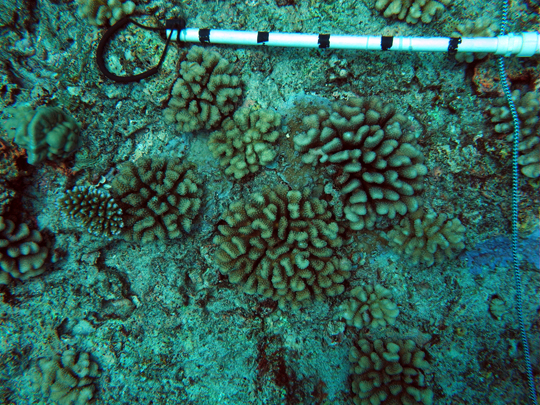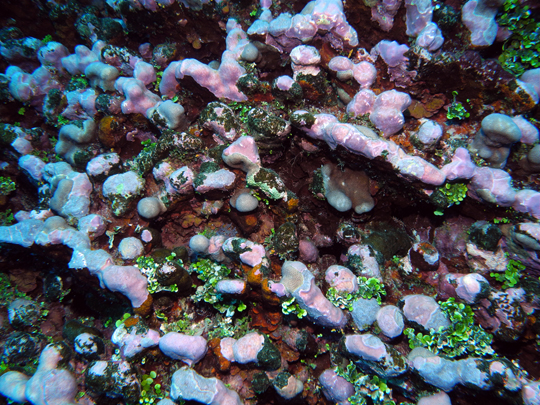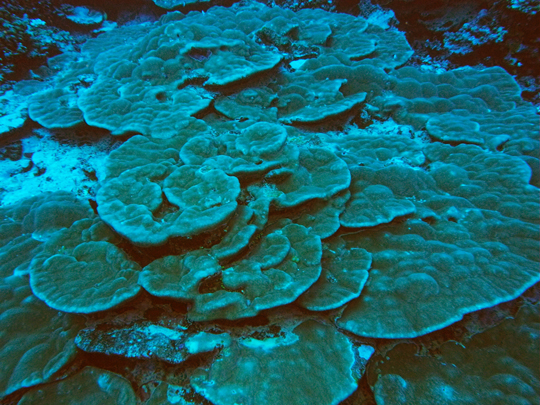For the last week, the Global Reef Expedition scientists have been diving and surveying the leeward side of fore reefs around Raiatea, French Polynesia, focusing their efforts on the reef slope. This particular reef community changes its structure along a depth gradient resulting in drastically different landscapes at 30 meters, 15 meters, and 5 meters.
Coral Variations Along the Reef Slope
The shallowest community on the reef slope has the most coral colonies, and coral recruits are abundant here. Coral recruits are young colonies entering the adult population after having settled and metamorphosed from a larva to a polyp. Recruitment plays a critical role in maintaining resilience of coral populations. Without it, the communities cannot be repopulated following a major disturbance (e.g. extreme sea surface temperatures, a hurricane, or a ship grounding).

The benthic community at the intermediate depths of the reef slope (15 m) is primarily comprised of dense coral rubble fields with extensive coralline algae cover. Coral rubble fields are created from the skeletons of dead corals, which break up to form loose rubble that covers the majority of the seafloor between 10 and 15 meters deep. Algae are interspersed among the broken pieces of coral skeleton. The genus Halimeda is the most common algae found in this depth range of the reef slope. It is a green, erect calcareous (mostly or partly composed of calcium carbonate) algae that has an appearance similar to oatmeal strung together like beads on a necklace, and, upon death, the flakes break up and form sand. Coralline algae, which also have a hard skeleton, are common, too. They are a reddish-pink color, and form a thick crust that cements the rubble in place.

The deep-water communities that start at 30 m and extend much deeper down the reef slope (below depths we can safely dive when using air) are usually comprised of dead or partially dead plating corals. The plates form multiple tiers down the wall comprised mostly of the genera Porites. Colonies of these corals can take different forms depending on the environment. The plate form is common at this depth because the light available for photosynthesis is limited, and this form allows for sufficient surface area to capture the needed light for nourishment by its symbiotic algae: zooxanthellae.

It is important to understand the variations in the communities across the depth gradient of the reef slope because each community may have a different response to environmental changes. Remarkably, we also see a lot of variation between reefs at the same depth. We have found some areas with an amazing amount of live coral composed primarily of larger, old colonies, others that have little live coral, and still others with dense assemblages of very small, young corals that have recolonized these reefs following a devastating loss due to crown-of-thorns sea star (COTS) predation. Understanding differences in coral assemblages helps us to identify how resilient these reefs are and patterns of reef recovery over time.
(Photos by: 1-3 Dr. Andy Bruckner)
To follow along and see more photos, please visit us on Facebook! You can also follow the expedition on our Global Reef Expedition page, where there is more information about our research and team members.


